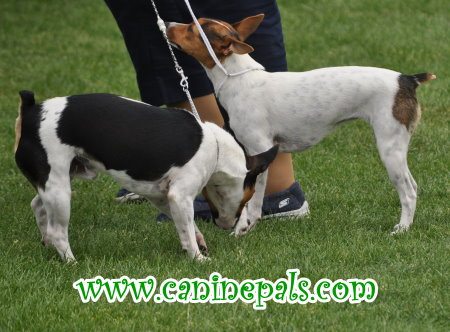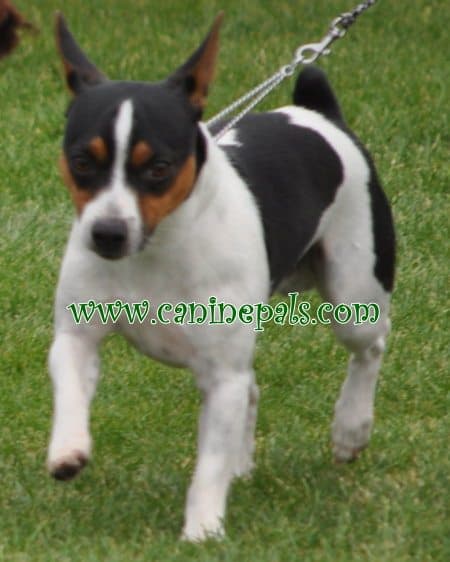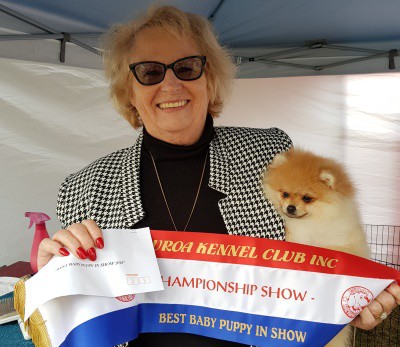Last Updated on March 8, 2024 by Denise Leo. Post first published on September 5, 2021.
This article is for all pet owners and families interested in learning more about Tenterfield Terrier Dogs. We will answer questions such as what they look like, how big they grow to be, their personality traits, and if they make a good family dog.
These little dogs have an outgoing personality that makes them great with children but can also get into mischief when too much alone. So if you’re looking for a doggie friend to add to your family, this might be the perfect breed!
In What Country Did Tenterfield Terriers Originate?
The Tenterfield Terrier originated in England and developed in Australia and was at one stage also called the Miniature Fox Terrier or the Mini Fox Terrier. The full origin of this dog isn’t fully known.
The Tenterfield Terrier’s origins are from the Old English White Terrier. Another school of thought is that during the development of this dog breed, the smallest puppies from Fox Terrier litters were crossed with other small breed dogs.
In the late 1800s, the Tenterfield dog was a definite part of rural Australian life. By the 1920s, he was also a popular dog breed for families in the suburbs too.
The name – “Tenterfield” is a town in New South Wales, and was incorrectly thought to be the birthplace of this breed. However, the truth is that the town is just one of many places where this dog lived.
The town has a different significance to Australians as the owner of its saddlery was the grandfather of the entertainer, Peter Allen. He wrote the “Tenterfield Saddler” about his grandfather who also happened to own quite a few small types of terriers.
The dog was named “Tenterfield” in the 1990s by Don Burke, a popular TV personality of the time. The name was accepted as a renaming of a Miniature Fox Terrier.
What Does a Tenterfield Terrier Look Like?
As for the dog itself, his coat is fine and short and he’s a square, well-balanced dog breed. Most of these dogs are predominately white and have tan, liver, or black markings.
The measurements of wither to the ground and wither to the rear should always be equal. The length of the head and neck must balance with the whole dog. The tail is usually docked as it makes a balanced appearance for dogs. A medium-sized head. Apple domed heads are considered highly undesirable.
Eyes are not large but slightly oval in shape. They should be as dark as possible with pigmented eye rims and a keen expression. Light-colored eyes or walled-eyes are discouraged.
The v-shaped ears are set high on the outer edge of the skull with tips that point slightly forward. They’re not wide or large at base, relatively medium in size, and should be roughly equal to the width between them. The ear’s texture is thin (not thick).
A Tenterfield’s strong-jawed mouth has full dentition and scissor bite. Lips should be tight-fitting, pigmented, and a wry mouth should receive heavy penalties in the show ring.
The neck is strong and clean, allowing the dog to carry their head proudly. The shoulders are well sloped back without being too heavily muscled.
Forelegs are of strong, round bone in keeping with the size of the dog. When viewed from any angle, they should be straight and have sufficient length to provide a balance between its frame.
The body is compact and short with a level topline, strong without slackness, and powerful loins. The chest does not drop below the elbow.
A Tenterfield’s pasterns should be parallel when viewed from the rear and vertical when viewed from the side. This dog’s hocks are well let down, and the stifle is well bent. The feet are small and compact, with moderately arched toes.
A docked tail is preferred with a high set and erect when alert but not carried over the back. Sometimes, however, it can be a natural bobtail that occurs in this breed on rare occasions.
Recognition
- ACR = American Canine Registry
- ANKC = Australian National Kennel Club
- APRI = American Pet Registry, Inc.
- DRA = Dog Registry of America, Inc
Group: Terrier
How Big Do Tenterfield Terriers Grow?
He’s usually 25 – 30 cm and the Tenterfield terrier weight is proportional to his height.
How Long Do Tenterfield Terriers Live?
The life expectancy of this dog is 14-15 years.
Tenterfield Terrier What’s Good About “em”

The Tenterfield Terrier is an agile, active, strong, versatile working terrier. He’s confident, bright, happy, and keen to learn. He’s very loyal to his owner. He’s independent, clever, fearless, highly intelligent and bold, and has an alert facial expression.
Tenterfield Terrier Health Problems
As a dog breed, the Tenterfield Terrier is a typically healthy animal. However, this dog breed is sometimes prone to facing patella luxation and hypothyroidism issues.
How to Train a Tenterfield Terrier

Tenterfield terrier training is similar to most terrier dogs, you need to be patient when training him. He’ll respond the way you expect if you use methods of positive reinforcement. Hitting and yelling will get you nowhere.
The Tenterfield Terrier responds well to training that rewards correct behavior and ignores incorrect behaviors.
Tenterfield Terriers are known for their ability to learn quickly. Still, they require a patient trainer who can reinforce the desired action while ignoring subsequent steps or mistakes to master what is being taught.
Tenterfield Terrier Temperament
The Tenterfield dog is very friendly and loves to curl up in your lap while you’re sitting in your favorite chair. However, he’ll be noisy and may be destructive if he’s bored. He gets along well with children. He can’t be trusted with other pets including guinea pigs and mice. He has a strong terrier “chase and kill” instinct.
Exercise Requirements
The Tenterfield Terrier needs to be kept occupied as much as possible. He needs daily walking or jogging. He’s ideal in fly-ball competitions and agility trials. He needs to burn off his energy so he’ll settle down when you want to relax.
These dogs are fairly active indoors, but they will do best with a place to run. They’re great apartment pups as long as you take them out for walks or let them play at the park every day!
Do Tenterfield Terriers Bark?
All small dog breeds are inclined to be “yappy” unless trained to behave otherwise. The Tenterfield Terrier is no exception.
Tenterfield Terrier Grooming Requirements

Grooming is easy for this pet or even for a show dog of this breed. Brush his short-haired, smooth coat regularly with a firm bristle brush. Wash him fortnightly in the warmer periods and monthly in the cooler weather. Use a chamois or towel to rub his coat so it shines.
Do Tenterfield Terriers Shed Hair?
All smooth-coated dog breeds shed coats on a daily basis. This shedding can be controlled by regular grooming to remove dead hairs before they are shed. Most Tenterfield terrier breeders will provide grooming instructions on how to handle shedding.
Final Thoughts On Tenterfield Terriers
A small, intelligent dog who doesn’t need a huge home to live in. He loves families and family life. He gets along with children of all ages. The Tenterfield Terrier has a lot of loving to give and he only asks to be loved in return.
I hope you’ve learned about Tenterfield Terriers. Whether you are looking for an intelligent and active companion dog that is also good with children or want a breed that can be left in your yard without too much trouble, these terriers may be just what you need!
If not, feel free to explore some other breeds on our website. I know there is another perfect pup out there waiting for their forever home – don’t give up until you find them!
Copyright CaninePals.Com. All Rights Reserved.
References and Further Reading:
ANKC Tenterfield Terrier Breed Standard
Tenterfield Terrier Club
The National Tenterfield Terrier Council (Australia)


